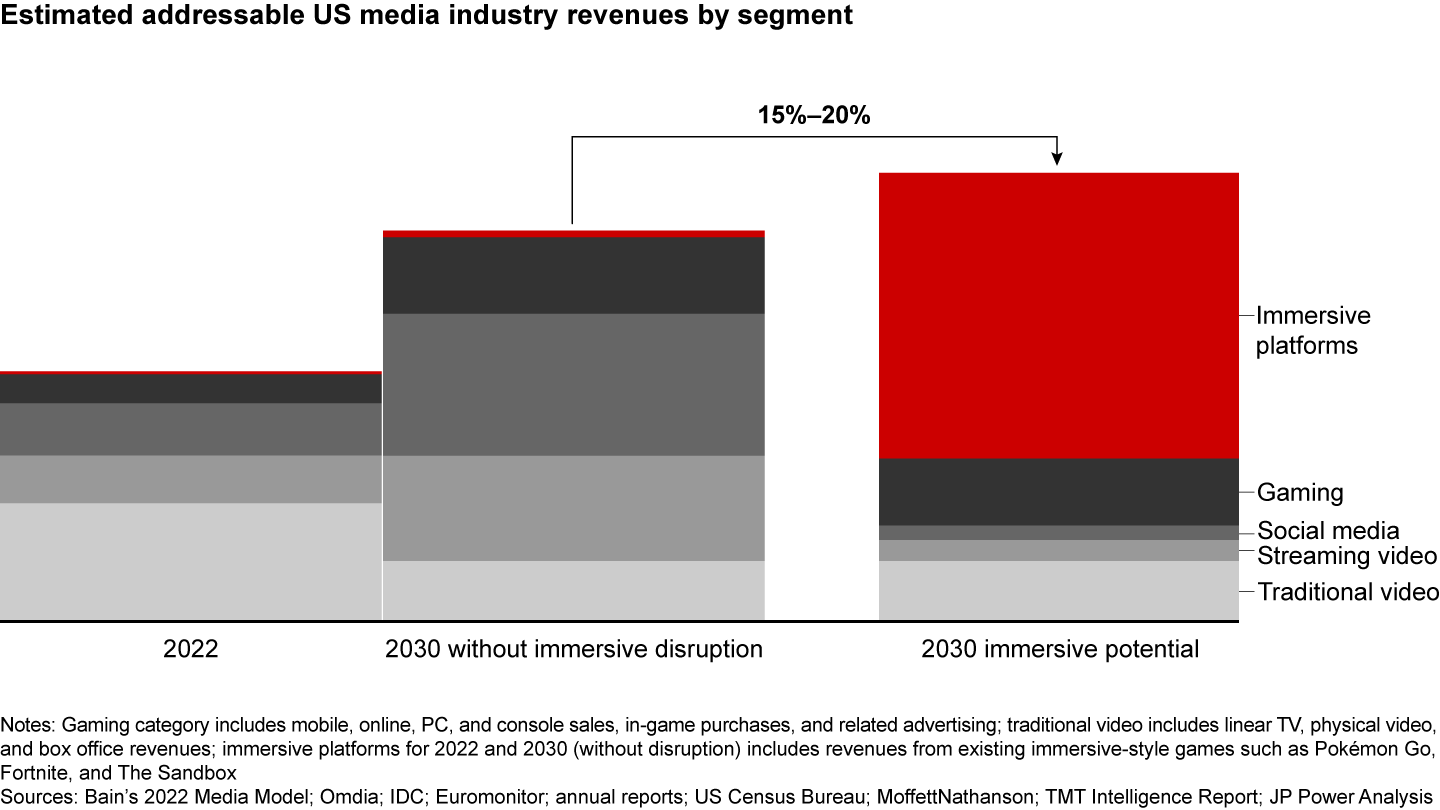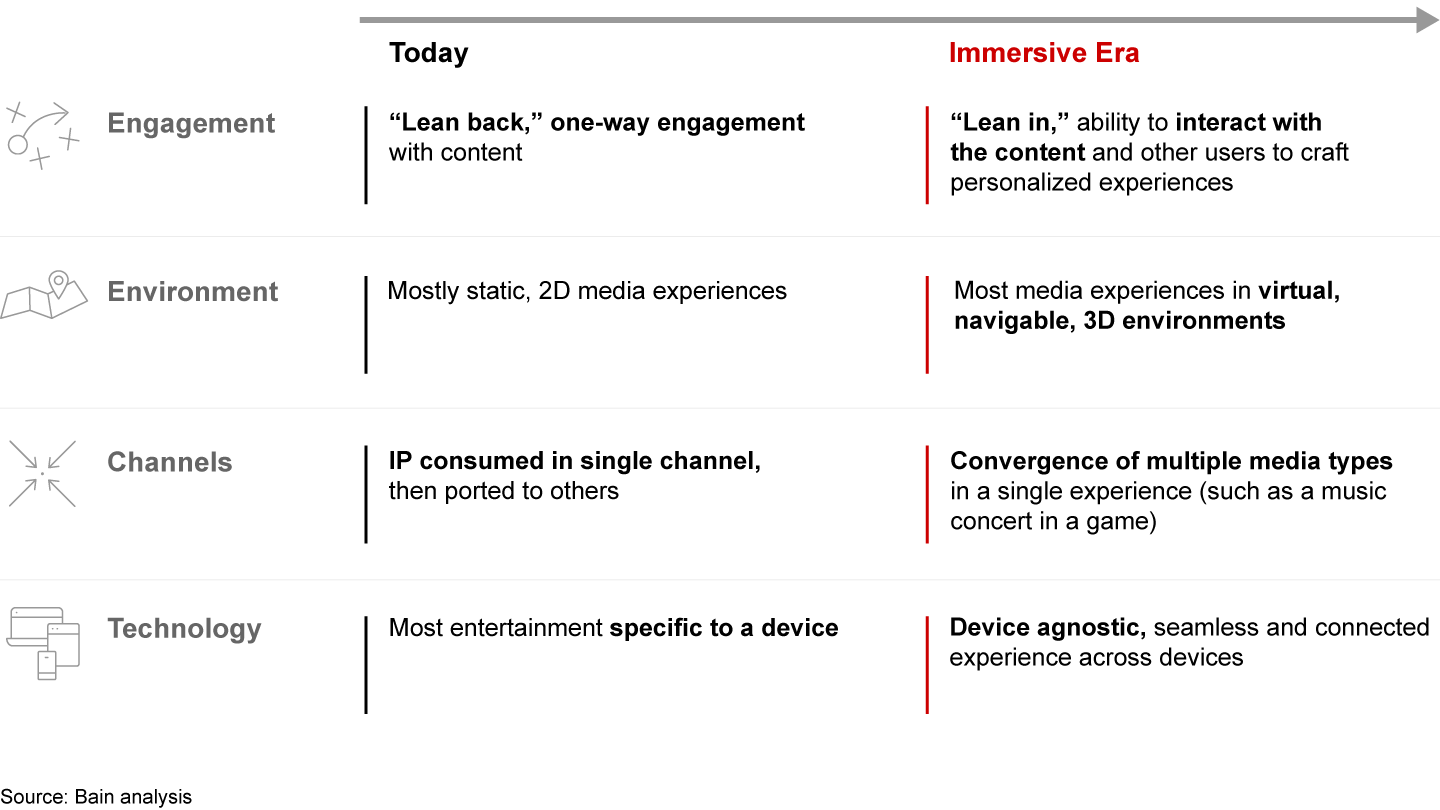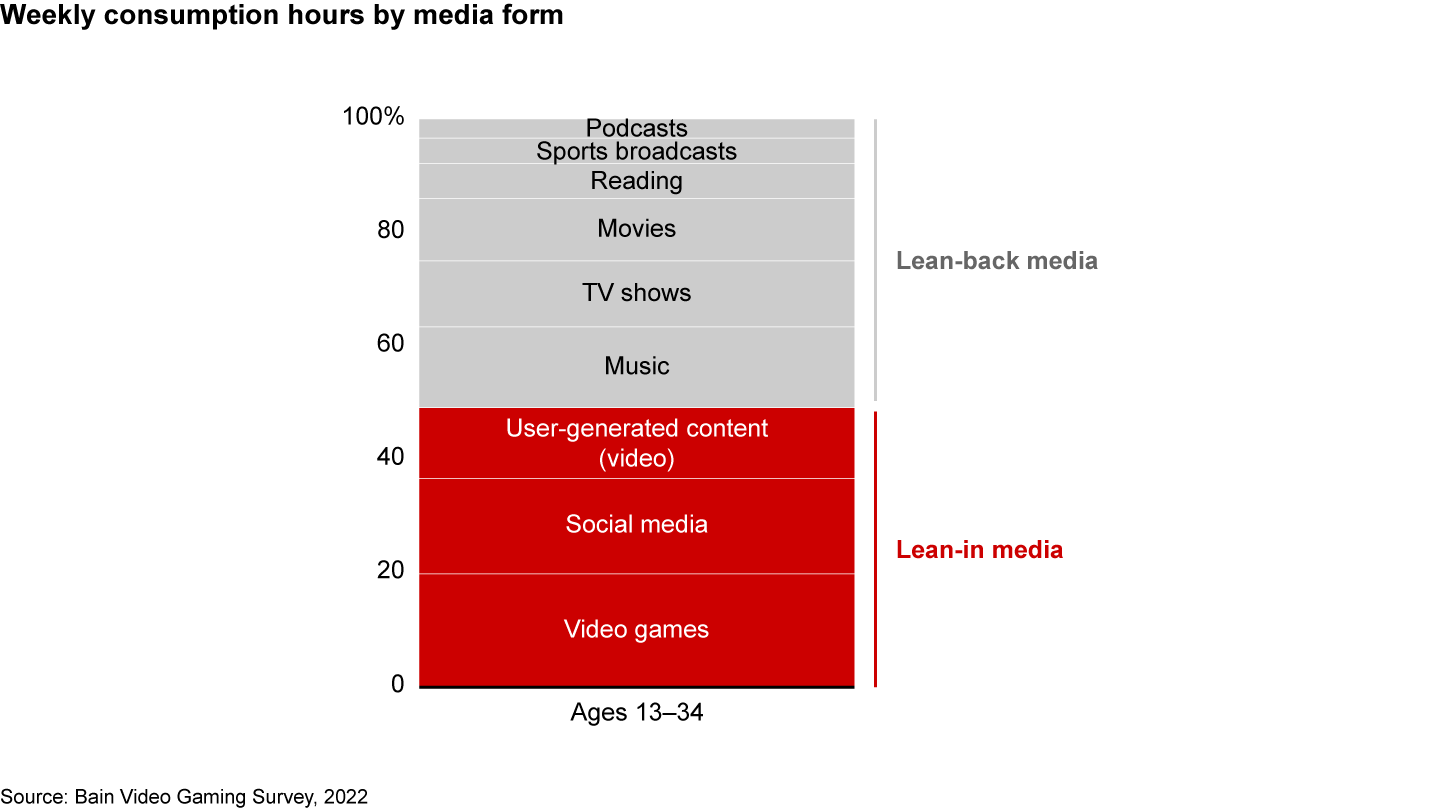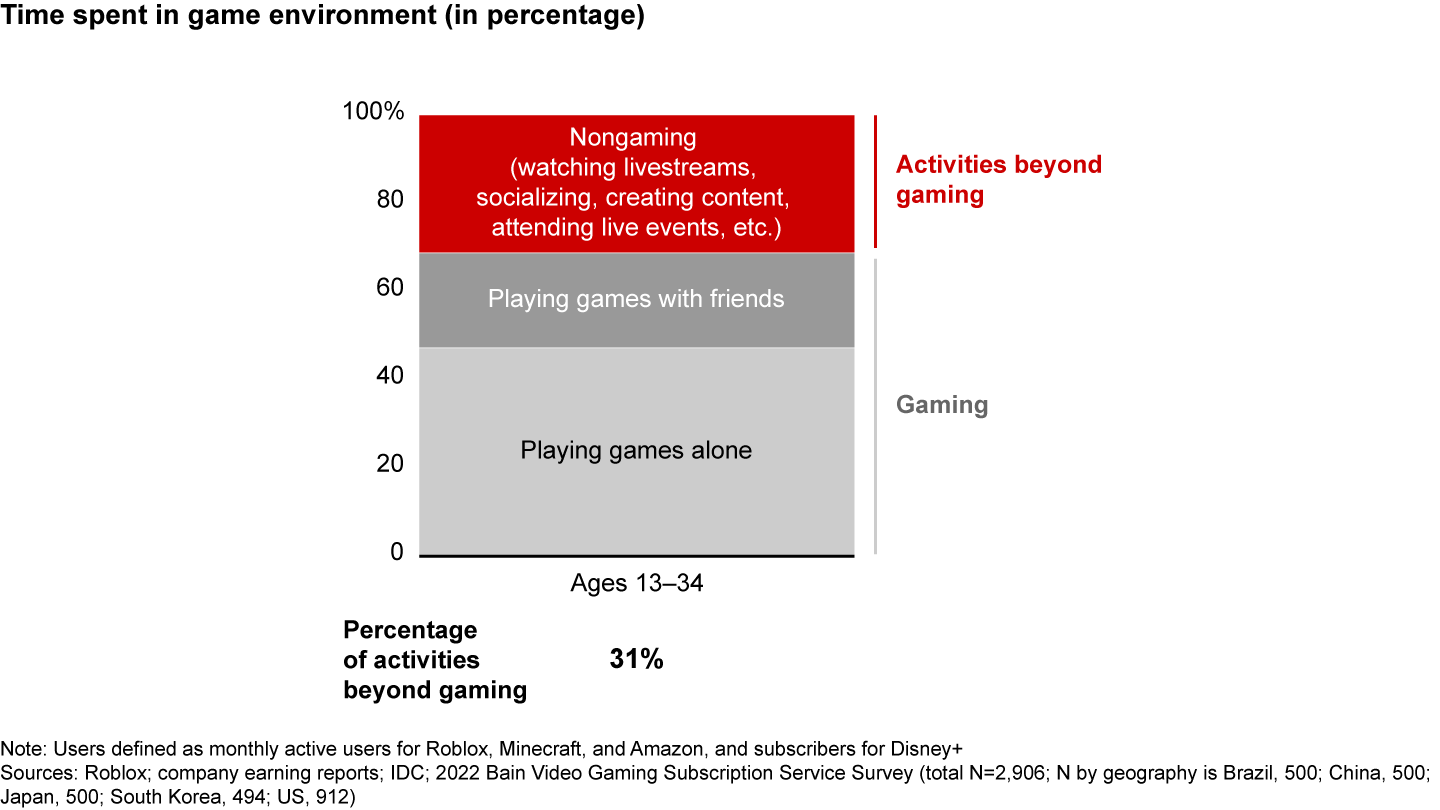Brief

At a Glance
- The media industry is entering a new era of more immersive content.
- Revenue streams from immersive platforms could grow US media revenues by as much as 20% by 2030.
- To prepare, media companies should build up their capabilities to develop “lean-in” content, real-time operations, and nonlinear storytelling.
The media industry is on the precipice of a major disruption as we enter what might be called the Immersive Era. Although interest in the metaverse has taken a back seat over the past year to the tidal wave of enthusiasm around generative AI and its ability to generate content, a more fundamental shift is coming in what and how we consume. Bain’s research has found that online games are the tip of the spear in immersive media, and these are quickly becoming platforms where consumers do much more than just play games. Meaningful value is at stake; our analysis of the revenue streams associated with these activities and related advertising suggests that the potential of immersive platforms in entertainment could grow the US media market by 15% to 20% by 2030 (see Figure 1).

The implications for media companies are significant. Interactive brand placement and a better understanding of customer preferences could help spike advertising spending, absorbing the decline from linear channels. As consumers shift away from current digital and physical entertainment options, immersive media stands to gain market share through a combination of traditional revenue streams such as subscriptions and new ones like “in-experience purchases” (such as digital items one might buy within a game). Immersive platforms could also accelerate the decline of traditional video and displace the streaming services and social media platforms of today.
One way to think about this shift is the difference between traditional “lean back” entertainment (everything from books to streaming media) and “lean in,” which is more interactive and engaging (see Figure 2).

History would suggest major disruptions are born out of the combination of three factors: consumer demand, changes in technology, and market shifts. Our conversations with executives and observations of the industry landscape suggest the necessary elements for the Immersive Era are already here.
- Consumer demand. Consumers under 35 spend about half their media time in lean-in environments, including gaming platforms, social media, and other user-generated content (see Figures 3 & 4).
- Technology advancements. More powerful phones running over 5G networks run 3D games that used to require consoles or PCs. Half the world’s population could have 5G by 2025.
- Market shifts. Game and social media profits have increased three to four times as much as other media types over the past five years. Investors have taken notice: From 2019 to 2022, the gaming sector saw more than $200 billion in M&A deal value.


Immersive models
Two types of immersive environments are likely to coexist: the walled garden and the broad entertainment platform. Both types of platforms bring together a range of different media types (video, gaming, music) into a common gathering place. Both generate revenue from ads, subscriptions, and other purchases. But they differ in ownership and content provider models, with varying implications for participants.
- Walled gardens. One company owns the platform, curates the experience, provides the majority of the content, and captures user data. But it can also include licensed content from other producers. Ads, subscriptions, sponsorships, and in-experience purchases all generate revenue. Success factors include the ability to invest in and host the platform, access to a wide set of compelling IP, and the capability for nonlinear storytelling, as we see in games today.
- Broad entertainment platforms. The platform hosts many brands and franchises from a wide variety of content producers.
- Platform owner. Provides the technology infrastructure (including a game engine) that attracts creators, and facilitates a virtual marketplace. The platform owner will likely own the user data across the platform, which is valuable for advertising. Revenue is generated by ads, sponsorships, subscriptions, and transactions, as well as from fees from other creators to access the platform and its consumer audience. Success factors include the ability to host and manage a broad immersive platform and marketplace, delivering a unified customer experience. Superior technical chops are a must to attract top-level creators.
- Experience provider. Curates their own branded experience on the platform. Revenue generated by ads, subscriptions, and purchases. As with other content providers, having access to great IP and nonlinear storytelling capabilities are must-haves.
What it means to you
Adoption speeds may vary, but recent disruptions suggest this could occur in just a few years: scale adoption of social media and video and music streaming took only six to eight years. Media companies should start building their view of how the future will unfold and a strategy to win. Leadership teams should focus on three priorities.
- Build or enhance a robust franchise engine. Franchises cultivate fandoms that enable new ways to monetize content. Some companies will only greenlight content with franchise potential. Old content should be reevaluated for franchise potential. Start building the engine to monetize fans and activating your IP across multiple mediums. Warner, for example, recently announced a franchise-first strategy, aiming to produce more franchise films tied to consumer products and other media formats, including video games and TV spin-offs.
- Identify and invest behind required technology and talent. Understand the tech stack of the Immersive Era and what you need to own or build on, such as gaming engines for developing immersive experiences and platforms for hosting them. Determine new skills and talent needed to create “lean-in” content and build organizational muscles for live ops—for example, capabilities for running real-time media operations and nonlinear storytelling, as gaming companies do. Ultimately, decide whether to buy, build, or partner.
- Begin to experiment. Start devoting investment dollars to testing and learning. Use existing platforms and channels to build immersive experiences and test audience engagement and new monetization streams. For example, NFL partnered with Fortnite, generating over $50 million from selling branded skins within the game.
The Immersive Era is upon us, and the lesson from previous industry disruptions is that early movers will gain a competitive advantage that will be difficult for later entrants to overcome. Where is your company positioned to win in this next era?



